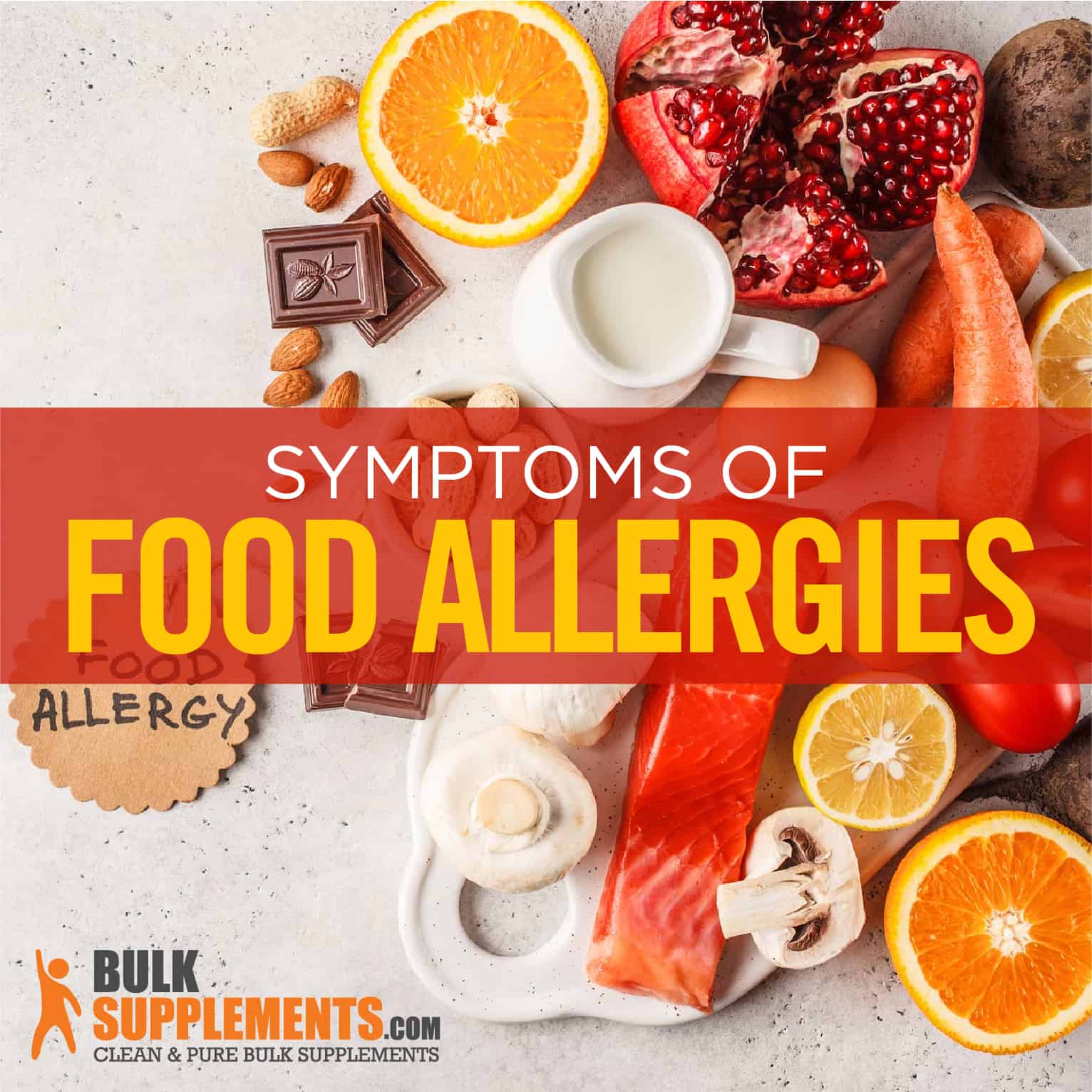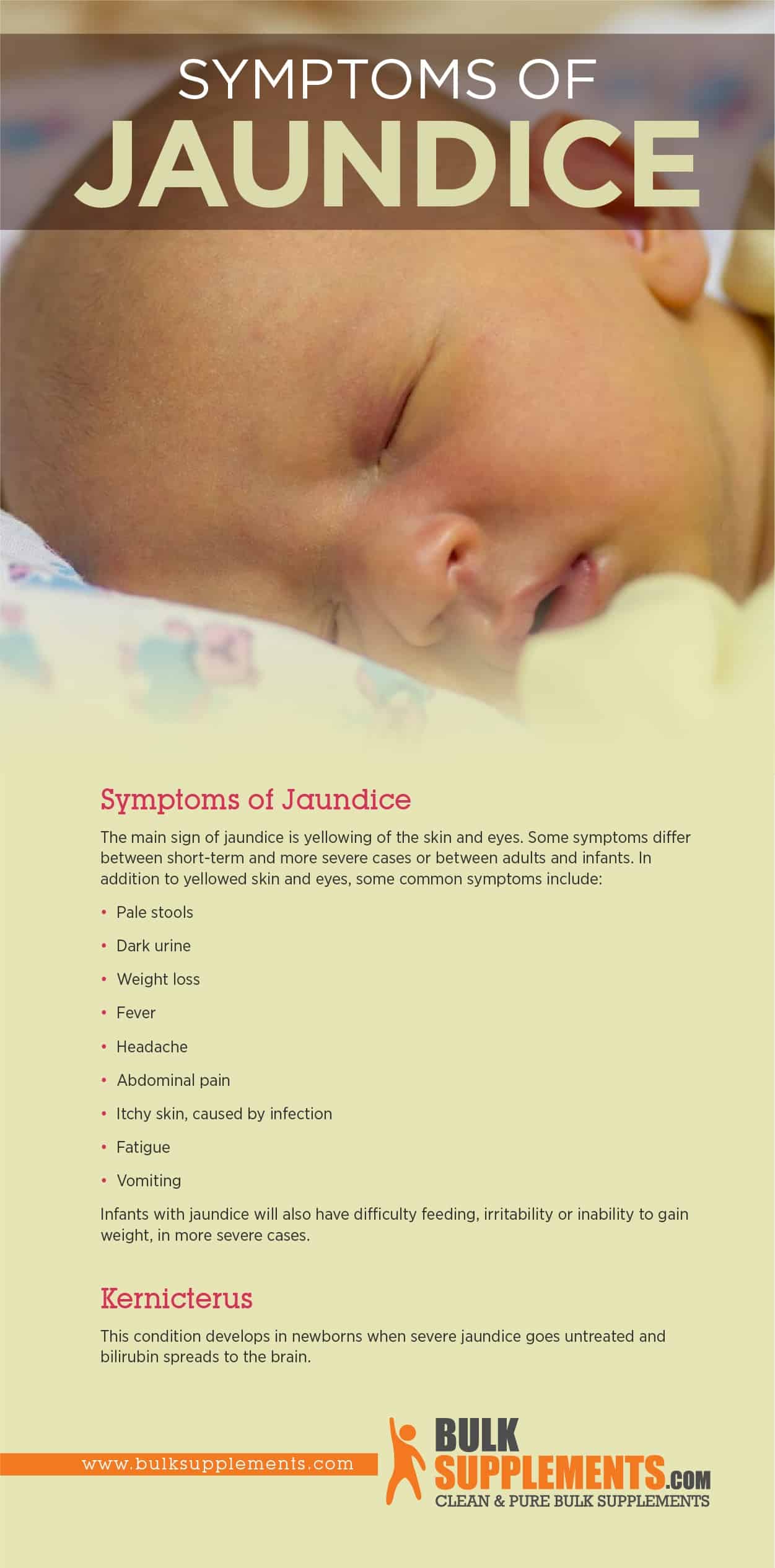Jaundice: Symptoms, Causes & Remedies

Jaundice
What is Jaundice?
Jaundice is a health condition in which the skin, the whites of the eyes and mucous membranes turn yellow from high levels of bilirubin in the blood. Bilirubin is a yellow pigment that builds up blood when the liver fails to break down old red blood cells.
Jaundice is very common in premature babies, affecting males more often than females. Approximately 60 percent of infants have jaundice and although it isn’t as common, it can also develop in adults.
Causes of Jaundice in Infants
Physiological Jaundice
In the womb, the mother’s liver removes bilirubin from the baby’s blood, but sometimes the bilirubin builds up if the baby’s liver is not developed enough to do it on its own. This form of jaundice is the most common, developing within the first few days after birth and resolving as the baby’s liver matures.
Breast Milk
Breastfed newborns can develop jaundice from certain chemicals in breast milk, which can prevent the liver from excreting bilirubin effectively. This condition is harmless and resolves on its own over 3-12 weeks.
Premature Birth
Babies born prematurely may have underdeveloped organs and have even more difficulty removing bilirubin from their bodies than full term babies, resulting in jaundice.
Mismatched Blood Type
This is a rare cause of jaundice in newborns. But if the baby has a different blood type than its mother, the antibodies in her body will start to attack the baby’s red blood cells.
Cephalohematoma
If doctors use tools during delivery, it can break the blood vessels under the scalp. If the blood builds up under the skin, there may be an increase in bilirubin and increase the risk of jaundice. Cephalohematoma occurs in 1 to 2 percent of all live births.
Causes of Jaundice in Adults
While jaundice is common in newborn babies, the symptoms are more rare in adults and can signal another underlying health condition interfering with normal bilirubin metabolism and excretion.
Hepatitis
Caused by viruses, toxins, infections, severe blood loss and alcohol, hepatitis is inflammation that can damage the liver over time, leading to jaundice. Acute viral hepatitis is a common cause of jaundice in young and healthy individuals.
Alcoholic Liver Disease
Jaundice can also develop from alcohol-related liver problems, such as alcoholic cirrhosis and alcoholic hepatitis. Heavy alcohol consumption leads to inflammation in the liver.
Blocked Bile Ducts
Bile ducts are thin tubes that transport bile from the liver to the small intestine. Cancer, rare liver diseases and gallstones can cause blockage and bilirubin buildup in the blood, resulting in jaundice.
Pancreatic Cancer
Statistics suggest that pancreatic cancer is the tenth most common type of cancer in men and the ninth most common in women. Jaundice is often one of the earliest symptoms of pancreatic cancer and results when the cancer begins to spread to the liver. Pancreatic cancer is one cause of blocked bile duct, which prevents the liver from removing bilirubin and secreting bile properly.
Medications
Although many different drugs can affect liver function, there are only a few that cause enough damage to result in jaundice. Penicillin, birth control and steroids are linked to liver damage. Specifically, acetaminophen poisoning is one common cause of medicinal liver damage.
Hemolytic Anemia
Jaundice is one of the symptoms of hemolytic anemia, in which the body destroys red blood cells but cannot replace them fast enough. It decreases the number of red blood cells in circulation, increasing indirect bilirubin. This form of anemia can sometimes occur in newborns as a result of mismatched blood type between the baby and its mother. Other times patients acquire it from other factors.
Other Causes
Dubin-Johnson Syndrome
A rare and inherited form of chronic jaundice, Dubin-Johnson syndrome usually affects adolescents and young adults, but sometimes it can affect newborns. It is caused by a genetic mutation that causes bilirubin to build up. Jaundice is usually the only feature of Dubin-Johnson syndrome.
Crigler-Najjar Syndrome
Also caused by a gene mutation, Crigler-Najjar syndrome affects the enzyme that processes bilirubin to create increased buildup.
Pseudojaundice
Pseudojaundice is harmless. In this case, the skin yellows not because of excess bilirubin, but because of other factors, such as Addison’s disease, anorexia, spray tanning products or excess beta-carotene levels from eating large amounts of melon, carrots and pumpkins.
Symptoms of Jaundice
The main sign of jaundice is yellowing of the skin and eyes. Some symptoms differ between short-term and more severe cases or between adults and infants. In addition to yellowed skin and eyes, some common symptoms include:
SEE ALSO

Food Allergies: Symptoms, Causes & Treatment
- Pale stools
- Dark urine
- Weight loss
- Fever
- Headache
- Abdominal pain
- Itchy skin, caused by infection
- Fatigue
- Vomiting
Infants with jaundice will also have difficulty feeding, irritability or inability to gain weight, in more severe cases.
Kernicterus
This condition develops in newborns when severe jaundice goes untreated and bilirubin spreads to the brain.

Diagnosing Jaundice
When diagnosing jaundice, the doctor will ask about the patient’s symptoms and health history before performing other exams.
Blood Tests
- Complete blood count (CBC) – measures the components of the blood, including platelet levels, white blood cells and red blood cells
- Bilirubin blood test – measures bilirubin levels
Imaging Tests
- Ultrasound – uses sound waves to observe the pancreas, gallbladder and liver
- Computerized tomography (CT) scan – shows pictures of different areas of the body to find abnormalities in the pancreas or the liver
- Magnetic resonance imaging (MRI) – provides a detailed visual of the bile ducts
Treatment
If the condition is mild, it may resolve itself. Adult cases do not usually require treatment, but infant cases can be more severe.Treatment usually aims to alleviate the cause of the condition rather than just the symptoms by:
- Feeding infants more often to produce more waste and flush bilirubin
- Pumping, rather than breastfeeding, breast milk
- Phototherapy
- Blood tests
- Blood transfusion
- Boosting iron
- Antiviral or steroid medications for hepatitis
- Removing any obstructions
- Changing or avoiding certain medications
Supplements for Jaundice
Riboflavin (Vitamin B2)
Vitamin B2 is used to treat neonatal jaundice. Riboflavin is a light-sensitive vitamin used in phototherapy.
Vitamin B12
Yellowing of the skin is often caused by Vitamin B12 deficiency. Increasing Vitamin B12 intake could be the simplest solution to reduce the appearance of jaundice.
Vitamin D
Low Vitamin D levels has been linked to the progression of certain liver diseases and, as a result, jaundice. Keeping stable levels of Vitamin D can help control the symptoms of liver problems including yellowish-skin.
The Bottom Line
Jaundice is a health condition characterized by yellowed skin and eyes as a result of bilirubin buildup in the skin and mucous membranes. Jaundice is most common in newborns, especially in breastfed, underweight or preterm infants. It develops within the first week of birth and usually disappears within one or two more weeks.
Jaundice treatment in adults depends on the underlying trigger or condition, whether it requires medication or surgery. In conjunction with treatment, supplements effectively supply nutrients and boost overall health.



